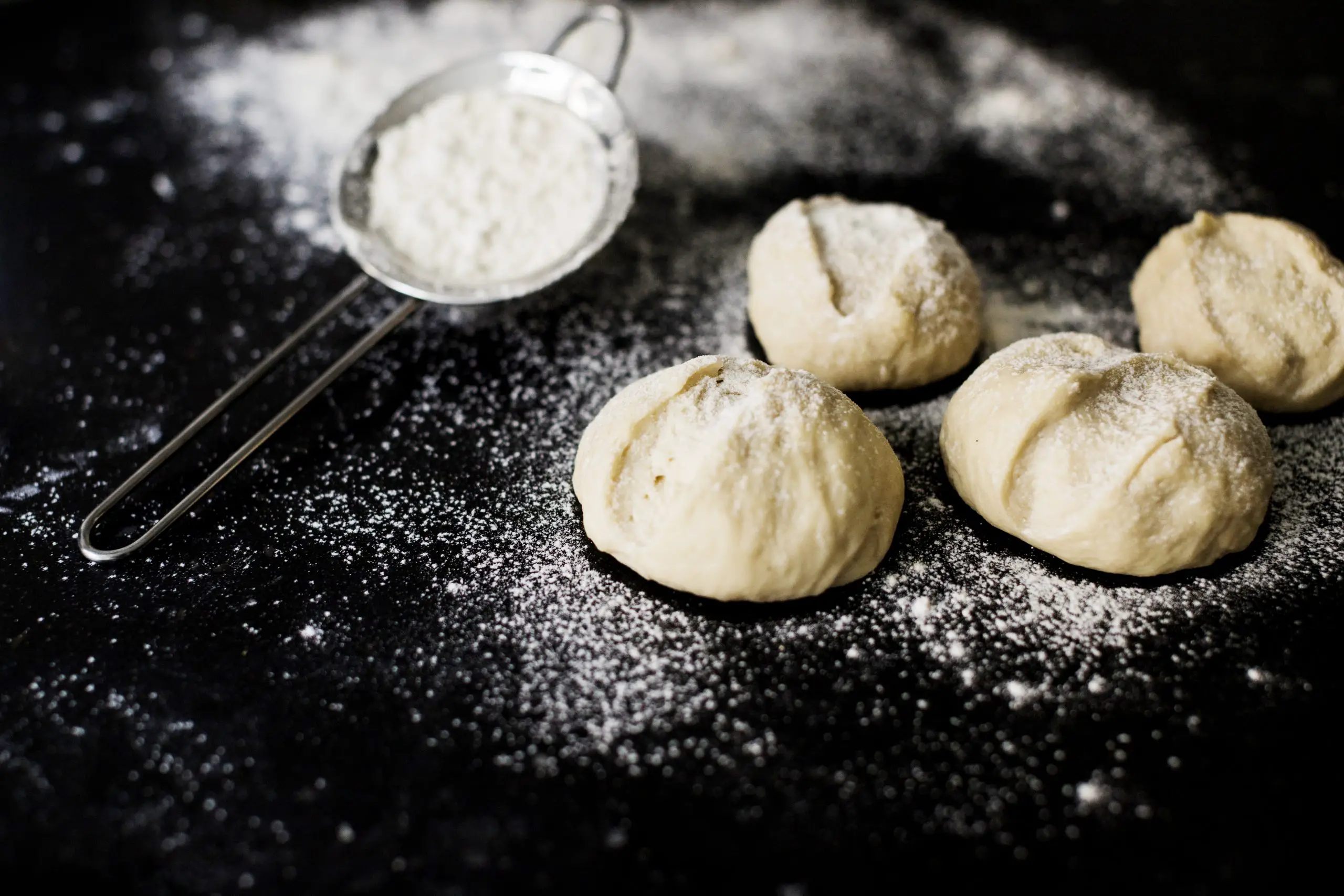Frozen cookie dough is an excellent approach to always having freshly baked cookies on hand. Additionally, portioning out cookie dough and only baking the number of cookies you need allows you to freeze the batter, reducing wastage and preventing overeating. It’s also a practical method to have dough on hand for hurried gatherings or last-minute baking around the holidays.
We’ll look at various freezing techniques for cookie dough in this post, along with advice on how to get the greatest results from thawing and baking. Cookie dough freezing is a technique that everyone, whether they are seasoned bakers or just getting started, should be able to execute.

How do you Freeze Cookie Dough?
You should consider several factors, including what kind of baking you plan to do. You must know the right techniques to freeze cookie dough for long periods. Also, you should ensure that the dough you buy has been frozen for at least two months before you bake it.
This will ensure that the cookies you make out of it are firm enough. This technique is particularly effective when you are freezing larger cookie dough discs for sweets like sugar cookies, gingerbread cookies, shortbread cookies, etc., that you want to roll out later.
The procedure is quite easy, takes just a few minutes, and is a terrific way to prepare for gatherings or gift-giving throughout the holidays. Following are instructions for freezing cookie dough; the process will vary slightly based on the kind of cookie dough you’re freezing:
- The dough into discs: With your hands, flatten the dough into a uniformly 1-inch thick disc. Or, if your recipe calls for the dough to be formed into a log, create the log in the size/shape specified.
- Wrap up firmly: To avoid freezer burn, tightly wrap the dough in plastic wrap or reusable bees wrap, being careful to cover the entire surface.
- Freeze: For up to three months, freeze. When the dough is ready, please place it in the refrigerator and let it thaw for 24 to 48 hours or until it is soft enough to roll or cut.
Here are Some Additional Tips for Freezing Cookie Dough:
- Do not over-mix the dough: Make sure to mix the dough enough to incorporate the ingredients; overmixing can result in tough cookies.
- Use the appropriate container: The dough’s quality can be preserved in an airtight container or freezer bag that can be sealed. The dough may dry out if you use containers with much extra air. Usually prefer to zip a plastic bag almost up before inserting a straw to remove extra air before the bag is completely sealed.
- Dividing up the dough: It is simpler to bake as many cookies as you like if the dough is frozen in individual balls. The dough can also be frozen in a log form, then cut off sections as needed.
- Add additional baking time: When timing your cookies, remember that frozen baking dough may require a few more minutes. To account for the frozen dough, you should lower the oven’s temperature slightly.
- Slowly thaw frozen dough: The dough should thaw slowly at room temperature to avoid becoming overly soft or sticky. The frozen dough balls can defrost more rapidly in the refrigerator if you’re in a hurry, but you must bake them right away to keep the dough from getting too soft.
Which is Better for Freezing, Baked Cookies or Raw Cookie Dough?
In general, raw cookie dough is preferable to baked cookies for freezing. After being frozen and thawed, baked cookies may lose their texture and turn stale. On the other hand, raw cookie dough can be frozen and baked fresh for a better texture and flavor.
To freeze the uncooked cookie dough, divide it into balls and place each on a baking sheet covered with parchment paper. The dough balls should be frozen for about an hour or until completely solid. Transfer the frozen dough to an airtight bag or container and freeze it for up to three months.
There is no need to thaw the dough before baking the cookies; set the frozen dough balls on a baking sheet and bake as directed by the recipe, extending the baking time as necessary. Baked cookies can also be frozen, but adequate packaging is necessary to prevent drying or staleness.
The cookies can be frozen for three months; defrost them at room temperature before serving. As much air as you can remove before putting the cooled cookies in an airtight container or sealable bag. Alternatively, you can individually wrap each cookie in foil or plastic before placing it in a bag or container.
How to Thaw Homemade Cookie Dough?
Please take the necessary amount of dough out of the freezer and let it thaw at room temperature until it reaches a usable consistency. The time it takes will depend on the size of the dough balls and the surrounding temperature, but on average, it takes an hour or two for the dough to thaw completely.
The frozen dough balls can also be defrosted more rapidly in the refrigerator if you’re in a rush. However, to keep the dough from getting too soft or sticky, make sure to bake it right away once it has defrosted. Before rolling it out or forming it into balls, you may need to place the dough back in the refrigerator if it gets too soft or sticky.
It’s crucial to remember that thawed cookie dough should be put out of the freezer. The dough should be cooked and consumed within a few days of thawing. Bake the cookies and then freeze them for later use if you don’t think you’ll be able to use the dough within that time limit.
Is the Cookie Dough Ruined if it is Frozen?
No, cookie dough is not ruined if it is frozen. Freezing cookie dough can be a convenient way to store it and have it on hand for baking at a later time. To freeze cookie dough, roll it into balls or scoop it onto a baking sheet lined with parchment paper. The dough may take longer to bake, and the finished cookies may be slightly drier than if the dough had been baked immediately after it was made, but these changes should not affect the overall taste and quality of the cookies.
Put the baking sheet in the freezer until the dough is firm, then transfer the dough balls or scoops to a resealable plastic bag or airtight container and place them in the freezer for three months. When you’re ready to bake the cookies, you can place the frozen dough balls or scoops on a baking sheet and bake according to the recipe’s instructions, adding a few extra minutes to the baking time to compensate for the dough being frozen.
How can Frozen Cookie Dough be Baked?
When it’s time to bake frozen cookie dough, adhere to the recommended temperature and timeframe for appropriate spreading, some cookies should be baked at room temperature. In contrast, others should be prepared when cold.
Crusty balls: The number of cookies you intend to bake should be removed. Put the dough on a cookie sheet that has been greased or lined. If the recipe asks for baking room temperature dough, let the dough thaw while the oven heats. Letting them defrost might not be necessary because cookie batter for drop cookies is frequently cooled before baking.
The cookie log: The log should be taken out of the freezer and left to thaw for 15 minutes on the counter. With the log unwrapped, use a chef’s knife to make the necessary cookie cuts. Gordon advises turning the log 90 degrees between each slice to prevent compression from the knife.
Cookies with cutouts: Take out the cookie dough disc from the freezer. You can let the dough thaw overnight in the refrigerator or counter. The cookies should be baked following the original recipe after the dough has been rolled out while it is still cool and the shapes cut out.
How Long does Cookie Dough Last in the Freezer?
Cookie dough that has been frozen properly can last up to three months. It’s crucial to put the dough in an airtight container or sealable bag and eliminate as much air as possible to maintain the highest quality and avoid freezer burn. Put the date and the type of cookie dough on the container or bag, then keep it in the freezer at a steady, freezing temperature.
No need to thaw the dough before baking the cookies; set the frozen dough balls on a baking tray and bake about the recipe, extending the baking time as needed. You might need to add milk or water to the dough if it has been frozen for a long time and has become crumbly or dry to help it hold together when you form it into balls.
It should be noted that freezing cookie dough only stops the aging process partially. The dough’s quality can deteriorate with time and might stop yielding the same results as brand-new dough. The frozen dough should be used within a few months of being stored in the freezer for the best results.
Conclusion
In conclusion, freezing cookie dough is a practical approach to always having freshly made cookies on hand. Cookie dough can be scooped onto a baking sheet covered with parchment paper or formed into balls and frozen. Cookie dough can be easily stored in the freezer and thawed when ready to bake.
When it’s time to bake the cookies, you can put the frozen dough scoops or balls on a baking sheet and bake them as directed by the recipe, allowing a few more minutes to account for the frozen dough. When the dough is set, place the baking sheet in the freezer. Once the dough is firm, move the dough balls or scoops to an airtight container or resealable plastic bag, and keep them in the freezer for up to three months.

